#Palais de Versailles
Text

Royal Chapel Versailles Palace
#royal chapel#chapelle royale#capilla real#palais de versailles#versailles palace#palacio de versailles#france#francia#europe#europa
176 notes
·
View notes
Text
France Bike Tour - Sep 2022
France Bike Tour – Sep 2022
VBT Tour Sept 2022.
Here’s our vacation itinerary. We had a wonderful time and met wonderful people.
https://docs.google.com/spreadsheets/d/1EYx3Zc5o-zTJ34B_WU-iINHJF_VufgTmqlpUzhnktHI/edit?usp=sharing
Bike Ride
Cour Cheverny. Fri 9/9/22. Practice Ride around town.
Ride from Chateau Chambord to Cheverny.
Chateau Chaumont Sun 9/11/22.
Chateau Chenonceau. Bike from Amboise to Chenanceau. Mon…

View On WordPress
#chanteau de villandry#Chateau Amboise#chateau chambord#chateau chaumont#chateau chenonceau#Chateau de la Bourddaisiere#Cour-Cheverny#france#Loire Valley#Palais de Versailles#paris#Tours france#vacation#VBT#VBT Bike Tour
1 note
·
View note
Text


Room known as the Empress’ Bedroom at the Grand Trianon in Versailles. Parade bed (1809) created after the design of Charles Percier (1764-1838) by the cabinetmaker Jacob Desmalter (1770-1841) for the imperial bedroom of Napoleon I at the Tuileries Palace from where it was transported to its current location in 1838. It was also the deathbed of Louis XVIII. This bed has been subject to several modifications. Its large escutcheon was altered several times and the layer was enlarged under Louis-Philippe. Original Empire balustrade (1810) by Pierre-Benoît Marcion (1769-1840). Marie-Louise selected the furniture in this room that remains to this day.
#napoleonic era#napoleon#napoleon bonaparte#Versailles#napoleonic#first french empire#19th century#french empire#history#france#bed#grand Trianon#Trianon#Palais des Tuileries#Tuileries#Jacob Desmalter#Jacob-Desmalter#Charles Percier#Percier#Pierre-Benoît Marcion#1800s#empire style#Louis xviii#Napoleon#interiors#interior design#neoclassical
20 notes
·
View notes
Text
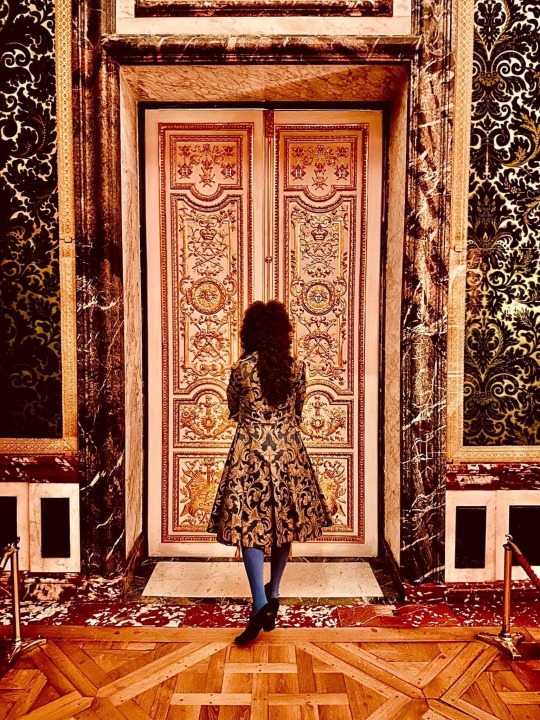
27 notes
·
View notes
Photo
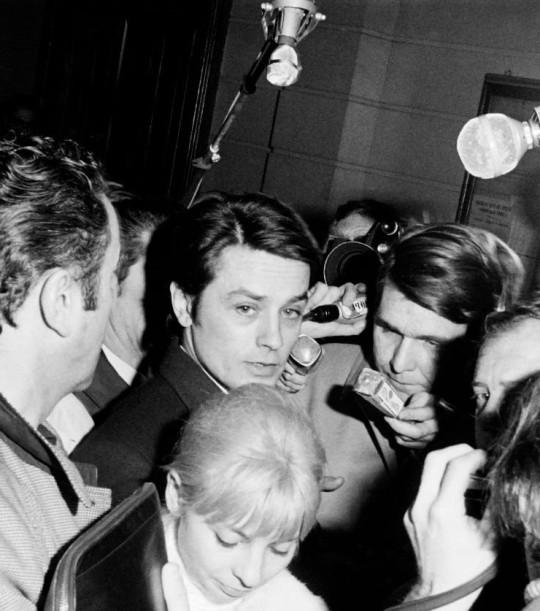
alain delon, Palais de Justice de Versailles
60 notes
·
View notes
Text
Versailles
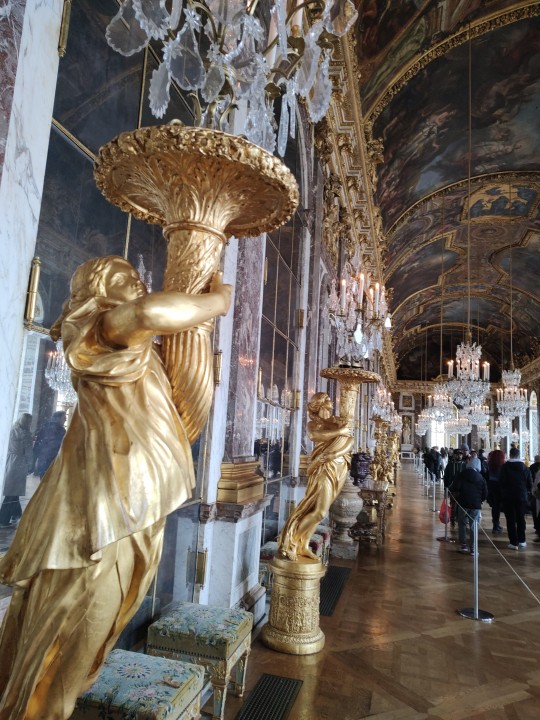
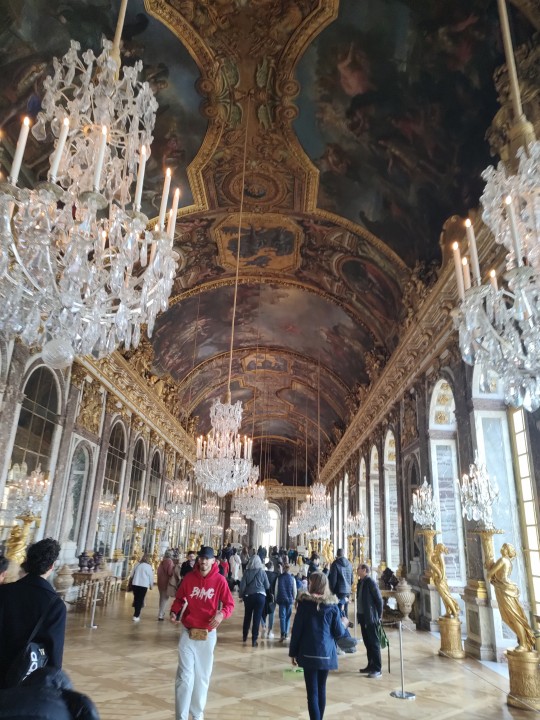



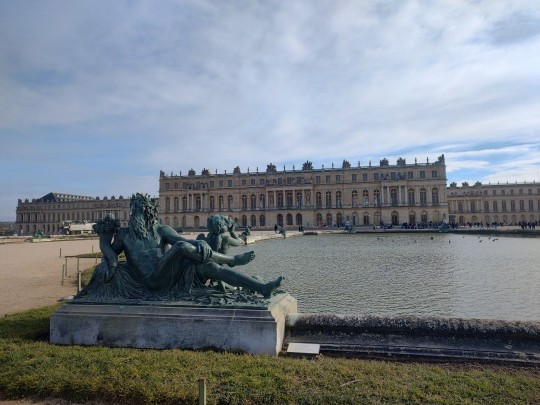
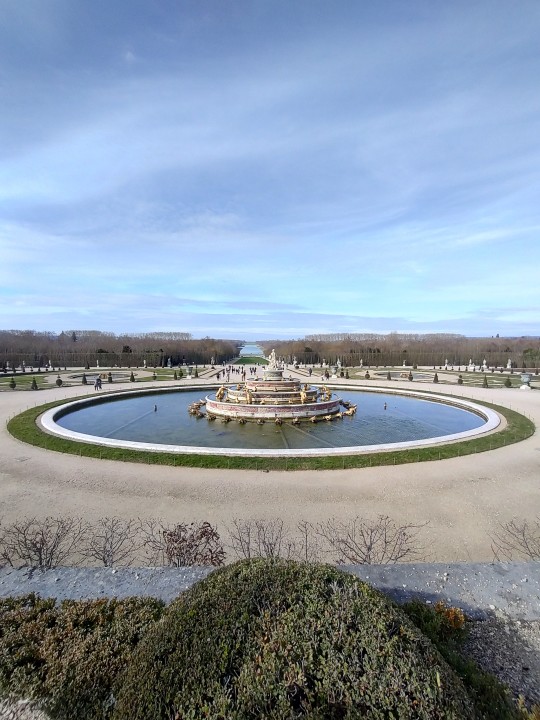
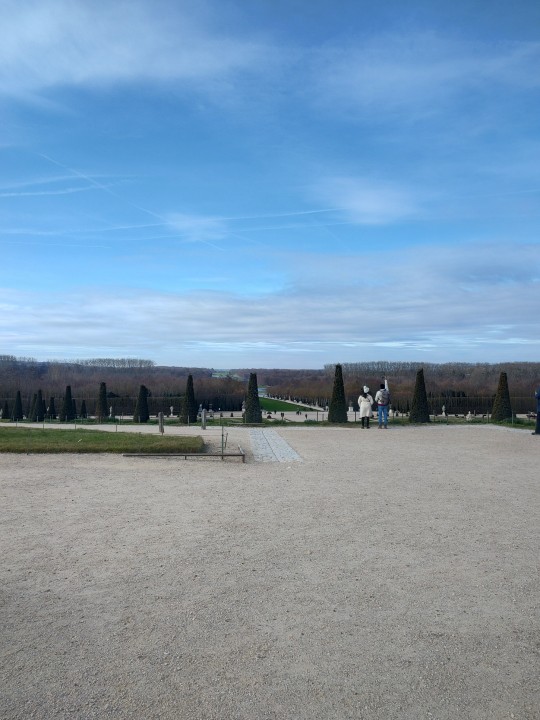
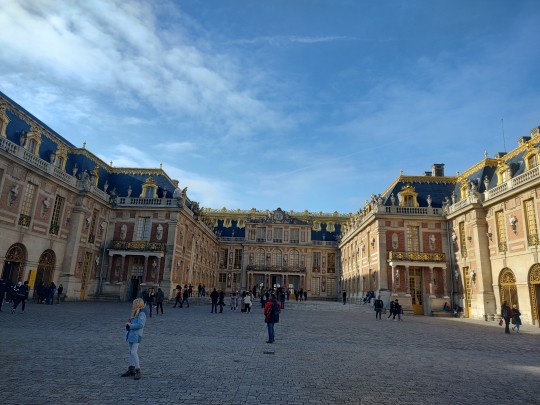

#europa#france#versailles#palais#roi de france#roi soleil#louis xiv#monumenthistorique#chateau#architecture#art deco#jardin#fontaine#galerie de glaces#grand canal#europe#francia#versalles#palacio#castillo#arquitectura#monumento historico#fuentes#canal
7 notes
·
View notes
Text
A brief history of Camille Desmoulins
It's March 2nd today, which means it's the birthday of my biggest writing muse: Camille Desmoulins, 18th-century journalist, French revolutionary and the man who called the Parisian people to arms, resulting in the Storming of the Bastille.
Despite essentially causing such a major historical event, Camille is largely glossed over by historians, and not many people know about him as a result. However, that doesn't mean he didn't have any influence on the revolution, and he contributed to it the same way as famous personalities like Robespierre, Danton, and Saint-Just did. So, in honor of his 264th birthday, here's a little history of the man gracing my profile pic.
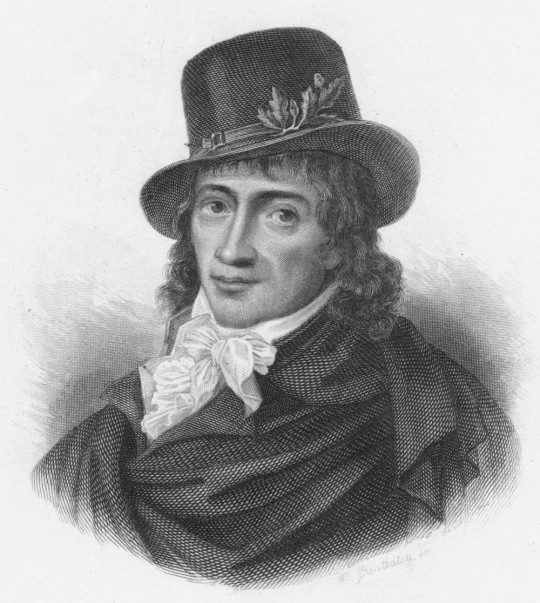
The early years
Camille was born in 1760, in the commune of Guise in the province of Picardy. At fourteen years of age, he obtained a scholarship to study at the Collège Louis-le-Grand in Paris, one of the most esteemed elite schools in France. There, he met Maximilien de Robespierre, and despite the boys being two years apart in age and having very different personalities - Maximilien was more calm and secluded, while Camille was lively and impulsive - the two bonded over their mutual love for classical history and philosophy.
After graduating from Louis-le-Grand, Camille began to pursue a career in law, being admitted to the Parlement of Paris in 1785. However, his stammer and lack of connections to the Parisian legal community impeded his success, so he instead took up writing as a journalist, with a primary focus on political affairs.
The Estates-General and the call to arms
When King Louis XVI convened the Estates-General in 1789, Camille was present at the procession on May 5th, writing a comment about the event. The Comte de Mirabeau, presenting himself as a middleman between the aristocracy and the Third Estate as well as a patron for Camille, even employed the latter as a writer for his newspaper for a time.
However, the mingling of the three estates was not well received by the king, and he tried to regain control over the members who had dubbed themselves the National Assembly by closing the Salle des Menus Plaisirs where the deputies met to them. Instead, the National Assembly held their meeting in the Jeu de Paume (which was normally used as the tennis court of Versailles), where the members from various estates swore the oath to not part until they had devised a new constitution for France.
Eventually, the king was forced to relent, but that didn't keep him from concentrating his troops in Versailles and Paris. When he dismissed finance minister Jacques Necker - who was very popular among the people and considered an advocate for their interests - the atmosphere in Paris took a turn for the worse.
The Parisians were angry, worried, and in fear, and in this situation - on July 12th, 1789 - Camille took the opportunity to leap onto a table in front of the Cafe de Foy in the Palais Royal. There, he delivered a passionate speech, even losing his usual stammer in the heat of the moment, calling the people to take up arms to defend themselves against the imminent massacre of the king's troops* and put on cockades so they recognize each other.
Following Camille's example, the people took green leaves from the trees lining the Palais Royal and stuck them to their coats. However, since green was associated with the Comte d'Artois, the conservative brother of the king, the color of the cockades quickly shifted to red and blue, the colors of the commune of Paris (white was added later to represent the king, in an attempt to reconcile the factions). Bad news for Camille's leaf cockades…
*The king most likely didn't plan to massacre the citizens, but the presence of so many troops, a good deal of them foreign, made the populace very anxious.
Journalistic career and the Girondins
After being present at the Storming of the Bastille, Camille continued to be politically active, publishing radical pamphlets and newspapers such as La France Libre, Discours de la lanterne aux Parisiens, and Révolutions de France et de Brabant. He joined the Club des Cordeliers led by Georges Danton and became part of the radical leftist Montagnards, the "Mountain" party of the National Convention, consisting of members such as Maximilien de Robespierre, Jean-Paul Marat, and Louis Antoine Saint-Just.
In 1790, Camille also married Lucile Duplessis, whom he had known for several years and harbored strong feelings for. However, despite Lucile's mother being a good friend of Camille's, her father repeatedly denied the couple his blessing, being of the opinion that Camille couldn't support a family with his meager income as a journalist. (Indeed, in the days prior to the revolution, Camille often had to live in poverty due to his difficulties establishing himself as a lawyer.) After gaining popularity as a journalist, however, Lucile's father finally allowed the lovers to marry, the marriage taking place on December 29th with Robespierre, Jacques Pierre Brissot, and Jérôme Pétion de Villeneuve being present as witnesses.
However, success and bliss were not meant to last: After the massacre at the Champs de Mars on July 17th, 1791, Camille had to go into hiding, putting his journalistic activities on halt for the time being. When he took up his work again in 1792, he wrote a few papers viciously attacking the political faction of the Girondins and specifically their leader, Jean Pierre Brissot. In his works, Camille accused them of betraying the republic and counter-revolutionary acts*, which majorly contributed to the arrest and subsequent execution of many Girondin leaders, including Brissot. However, Camille came to regret his role in their deaths: During the trial, he was lamenting "Oh my God! My God! It is I who killed them!", collapsing in the courtroom when the death sentence was announced.
*The Girondins had acquired a reputation of intending to harm the revolution with their actions, on one hand due to their pro-war attitude (the war with other European empires had taken its toll on the Republic of France), and on the other hand due to the party's indecisiveness concerning the judgement of the king (some of them argued for clemency or a milder punishment).
Vieux Cordelier and downfall
After 1793, Camille had a notable change of heart, becoming one of the voices in favor of clemency instead of terror. In what would become his most well-known and popular journal, Le Vieux Cordelier, he argued against imprisoning citizens based on the mere suspicion of counter-revolutionary activities, condemning the brutality of the Reign of Terror and even directly addressing his old friend Robespierre to moderate his approach.
However, this only ended up making Camille another prime target. Robespierre initially tried to defend Camille from the Jacobin Club calling for his expulsion, but this changed when Danton's secretary, Fabre d'Églantine, was exposed for financial fraud. This cast a poor light on Danton and his allies, including Camille, and it was what made Robespierre support legally persecuting them. Charges of corruption, royalist tendencies, and conspiracy against the revolution were brought forth against them, resulting in the arrest of Camille, Danton, and the rest of the Dantonists.
The trial itself took place from April 3rd to 5th, and was obviously aimed at getting rid of the political threat that Danton and his allies posed. By decree of the National Convention, the accused were not allowed to defend themselves, in addition to being denied the right to call any witnesses. The guilty verdict, which was essentially prescribed due to the nature of the trial, was passed in the absence of the defendants to prevent unrest in the courtroom, and the Dantonists were scheduled to ascend the scaffold on the very same day.
In Luxembourg prison, Camille wrote a last letter to his beloved wife Lucile, with spots from tears being visible to this day. However, it should never reach her, as Camille was informed that Lucile had also been arrested on his way to the scaffold. He went wild upon hearing the news, and it took several men to get him into the tumbrel. Of the fifteen Dantonists guillotined on April 5th, 1794, Camille was the third to die.
Lucile, who had been arrested on the charge of conspiring to free her husband, followed him only eight days later, being guillotined on April 13th, 1794. She left behind her not even two years old son, Horace Camille Desmoulins, who was raised by Lucile's mother and sister. In 1817, Horace emigrated from France to Haiti, where his gravestone can be found to this day.
And that is the story of Camille Desmoulins: the man who ignited the spark of the French Revolution, but eventually got disgusted by its brutality, leading to his tragic end.
Camille may be a bit overlooked as a historical figure, but that does not make him less interesting or important.
So, in all due honor: Happy birthday, Camille! 🎂
#french revolution#frev#camille desmoulins#lucile desmoulins#history#french history#joyeux anniversaire Camille! <3
78 notes
·
View notes
Text

A WHITE MARBLE BUST OF MARÉCHAL SOULT (1769-1851) by Jean-Antoine Houdon (Versailles 1741-1828 Paris), 1813)
'There are only two known marble busts of Maréchal Soult by the great French sculptor Jean-Antoine Houdon. The first was created for the salle des Maréchaux in the Palais des Tuileries and was displayed among other portrait busts of France's leading marshals, generals and navy men. However the bust disappeared in 1871 following the great fire at the Tuileries. The second bust was given to Soult's family, and is mostly likely the present sculpture. This second bust is recorded to be dated 1812, while our bust is dated 1813. However, the pen inscription to the reverse indicates that the bust descended from the family of Count Pierre de Mornay Soult de Dalmatie, Marquis de Mornay Montchevreuil (1837-1905), who was the grandson of Maréchal Soult via Soult's daughter, Joséphine Louise Hortense Soult de Dalmatie (1804-1862).'
(Source)
#Jean-de-Dieu Soult#Marshal Soult#Maréchal Soult#Jean-Antoine Houdon#Napoleon's Marshals#Napoleonic Wars#Napoleonic Era
23 notes
·
View notes
Text


New 50 euro banknote with the effigy of Emperor Napoléon V of Francesim
The banknotes bearing the effigy of the new Emperor will enter into circulation during the year 231. They were unveiled today by the Europeansim Central Bank. The Emperor joins the "pantheon" of leaders represented on Europeansim banknotes.
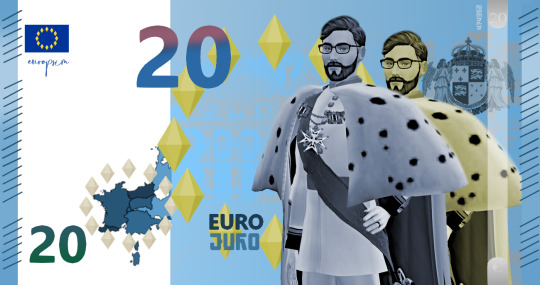
20 euro banknote representing the empire of Pierreland (@officalroyalsofpierreland)

10 euro banknote representing the kingdom of Iona (@funkyllama)
The image of Napoléon V will appear alongside the coat of arms Simparte and the Palace of Versailles. It comes in place of the image of the late Emperor Napoléon IV on the front of the bills, according to the visuals unveiled by the monetary institute.

The engraving was made during the month of Floréal, from a photo provided by the imperial family. The old 50 euro banknotes representing the Emperor Napoléon IV will be gradually withdrawn from circulation from next year, just like the coins.
Le nouveau billet de 50 euros à l'effigie de l'Empereur Napoléon V de Francesim
Les billets à l’effigie du nouvel Empereur entreront en circulation dans le courant de l'année 231. Ils ont été dévoilés aujourd'hui par la Europeansim Central Bank. L'Empereur rejoint ainsi le "panthéon" des dirigeants de l'Europesim représentés sur les billets européens.
L’image de Napoléon V apparaîtra aux côtés du blason Simparte et du palais de Versailles. Elle vient à la place de l'image de feu Sa Majesté l'Empereur Napoléon IV sur le recto des billets, selon les visuels dévoilés par l’institut monétaire.
La gravure a été réalisée durant le mois de Floréal, à partir d'une photo fournie par la famille impériale. Les anciens billets de 50 euros représentant l'Empereur Napoléon IV seront retirés petit à petit de la circulation à partir de l'an prochain, tout comme les pièces.
#simparte#ts4#ts4 royal#sims 4 royal#royal simblr#sims 4#sim : louis#sims 4 fr#gen 2#sims 4 royalty#sims 4 royal simblr#sims 4 royal story#ts4 royalty#ts4 royal simblr#ts4 royal legacy#ts4 royals#euros#wordbuilding
85 notes
·
View notes
Text


So, i played and completed ACU {wonderful ac} and i still wish they had a DLC where Shay and Arno meets in Palais De Versaille after Arno learns from Olivier how Charles died, although he doesn’t know the full details. This makes Arno search for Shay and finds him at the very room his father died in. Angered, he demands answers from the Templar as to why he did that, but Shay just plain out ignores the Assassin which further angers Arno and he choses to let his sword do the talking which leads to a long fight between the two, with of course Arno winning, but lets Shay escape with a warning. “Set foot here again, and i WILL kill you!”
20 notes
·
View notes
Text

Versailles... Le Palais des Glaces pour oiseaux ! ❄️
15 notes
·
View notes
Text

Jardin - Palais de Versailles
#jardin#garden#sculpture#escultura#palais de versailles#versailles palace#palacio de versailles#versailles#france#francia#europe#europa
64 notes
·
View notes
Photo

Glorious Blythdunes, the French-style Palm Beach showplace of Jayne Wrightsman, doyen of New York society. Throughout her life, Mrs. Wrightsman was an avid collector of decorative arts from the ancien régime, amassing the finest private collection in the United States. Naturally then, when designing and decorating her new home, she retained the greatest tastemakers, including Stéphane Boudin, Henri Samuel and the Paris based firm Denning & Fourcade. I always find it so extraordinary that Mrs. Wrightsman had the parquet de Versailles from the Palais Royal in Paris lifted, transported across The Atlantic and installed at her beloved Blythedunes. #palmbeach #miami #florida #blythedunes #jaynewrightsman #artcollector #socialite #philanthropist #palmbeachflorida #interior #interiors #chinoiserie #chinesewallpaper #chinoiseriewallpaper #frenchdecorative #decorativearts #decorativeantiques #frenchdecorativeantiques #ancienregime #stephaneboudin #henrisamuel #denningandfourcade #decor #decoration #interiordesign #interiordesigner #interiordecor #interiordecoration #interiordecorating #interiordecorator (at Palm Beach, Florida) https://www.instagram.com/p/Cpnb9rGIeqp/?igshid=NGJjMDIxMWI=
#palmbeach#miami#florida#blythedunes#jaynewrightsman#artcollector#socialite#philanthropist#palmbeachflorida#interior#interiors#chinoiserie#chinesewallpaper#chinoiseriewallpaper#frenchdecorative#decorativearts#decorativeantiques#frenchdecorativeantiques#ancienregime#stephaneboudin#henrisamuel#denningandfourcade#decor#decoration#interiordesign#interiordesigner#interiordecor#interiordecoration#interiordecorating#interiordecorator
23 notes
·
View notes
Photo
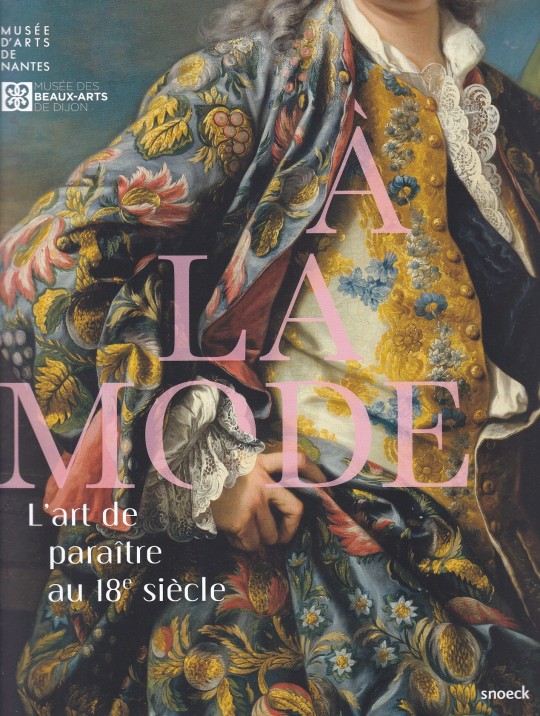
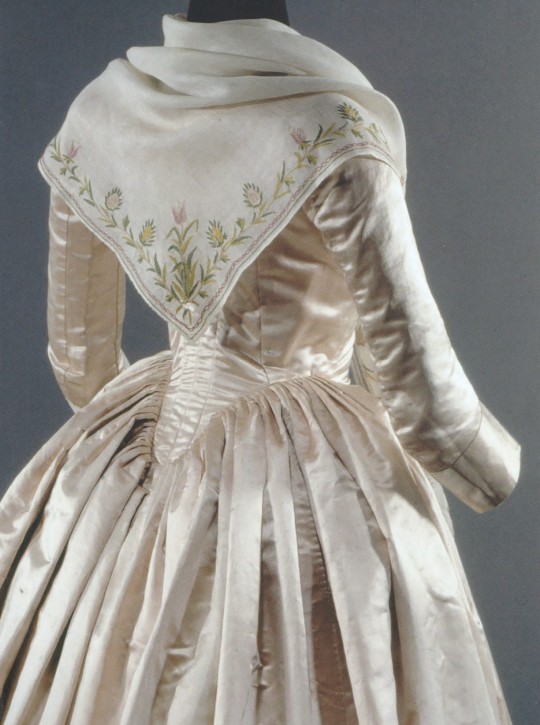


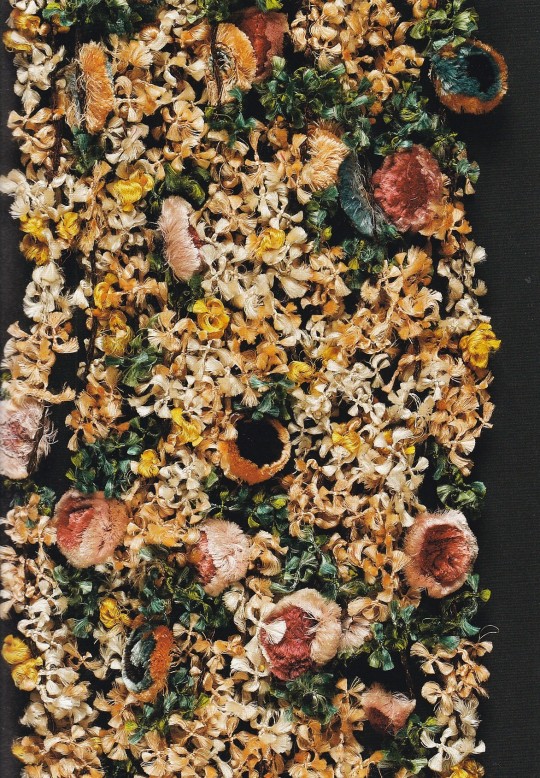
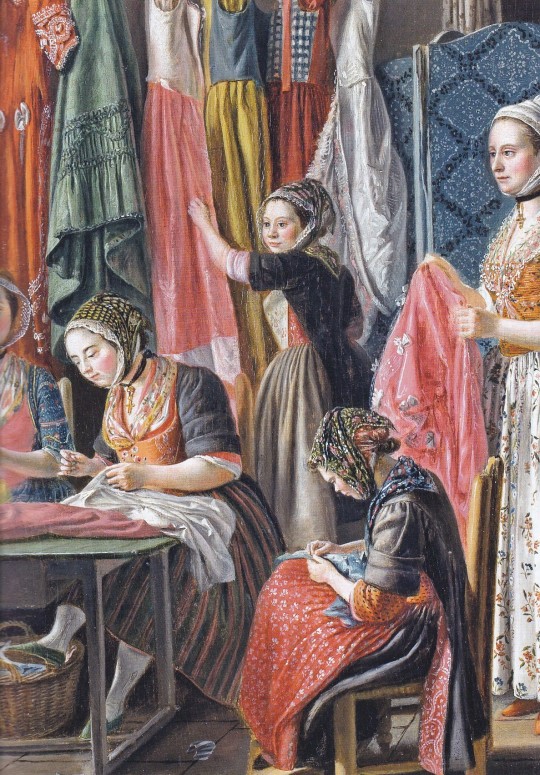
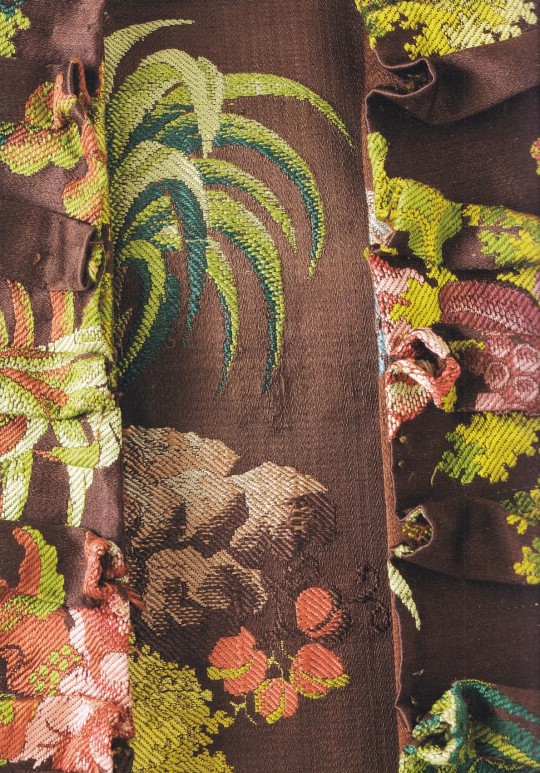
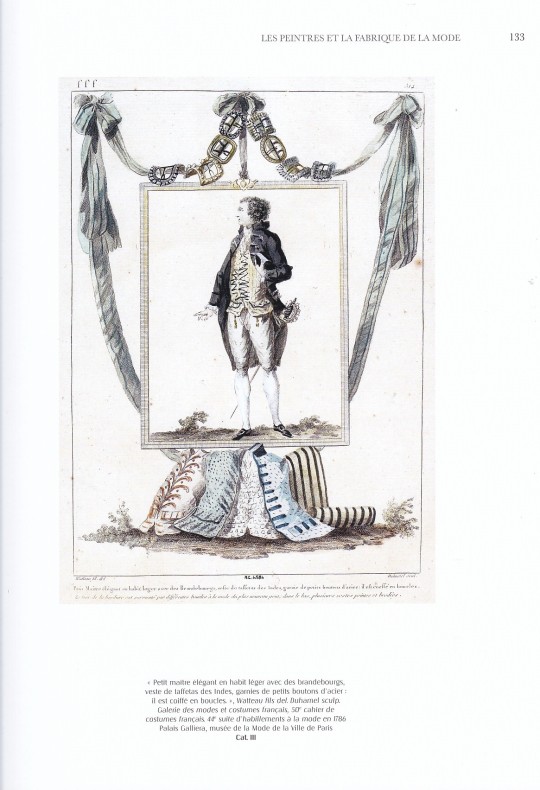
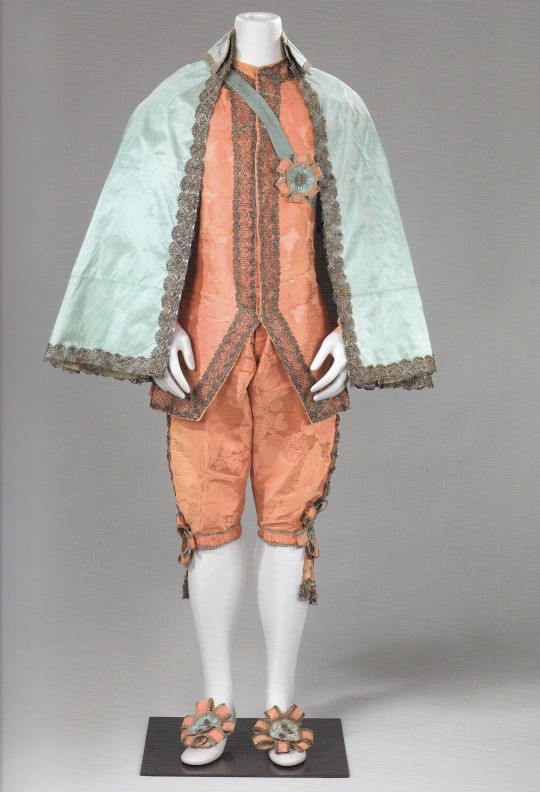

À la Mode
L’art de paraître au 18e siècle
Musée des beaux-arts de Nantes & Musée des beaux-arts de Dijon
Snoeck Publishers, Gand 2021, 328 pages, 23 x 29 cm, Broché,ISBN 978-9461617101
euro 40,00
email if you want to buy :[email protected]
L'histoire du costume et de sa représentation au siècle des Lumières est autant l'illustration réelle d'une culture matérielle qu'une création de l'imaginaire. Au 18e siècle, la naissance de la mode est d'abord celle de nouveaux métiers et d'une presse spécialisée, et constitue le signe d'une transformation accélérée de la société. Le style français, porté à la fois par l'aristocratie et la haute bourgeoisie urbaine, s'impose dans toutes les cours et les villes d'Europe. Pour la première fois, la confrontation d'oeuvres picturales avec des costumes du 18e siècle permettra d'explorer une nouvelle mise en scène du corps, entre l'exigence sociale et les caprices du goût. L'exposition réunit près de 200 objets du 18e siècle, issus des grands musées textiles (Musée de la Mode de la Ville de Paris, Musée des tissus de Lyon, Musée de la toile de Jouy, Musée de la Chemiserie et de l'Elégance Masculine) et de beaux-arts (Nationalmuseum de Stockholm, Rijksmuseum d'Amsterdam, Victoria and Albert Museum de Londres, Versailles, Louvre, Ecouen, Nantes, Dijon, Tours, Orléans. .). Des tableaux emblématiques côtoieront textiles précieux dessins inédits, vêtements et accessoires, dont certains spécialement restaurés pour l'exposition. Avec “ À la mode”, le Musée d'arts de Nantes et le Musée des beaux-arts de Dijon, en partenariat avec le Palais Galliera, musée de la Mode de la Ville de Paris, confirment leur volonté d'associer une véritable exigence scientifique sur un sujet peu exploré dans les expositions sur le 18e siècle, à une ouverture sur un large public.
22/12/22
orders to: [email protected]
ordini a: [email protected]
twitter: @fashionbooksmi
instagram: fashionbooksmilano, designbooksmilano tumblr: fashionbooksmilano, designbooksmilano
#À la Mode#fashion exhibition catalogue#Musèe beaux -arts Nantes & Dijon 2021#histoire costume#18e siècle#siècle Lumières#fashion books#fashionbooksmilano
25 notes
·
View notes
Text
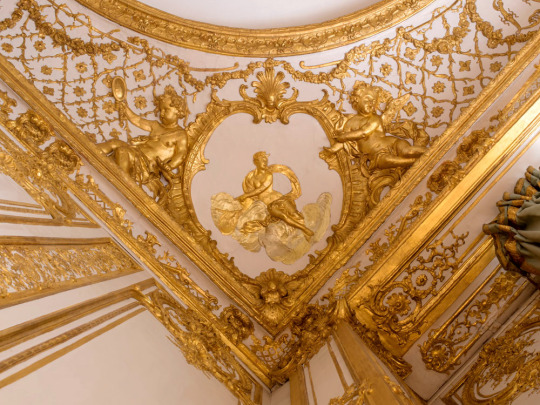
Palais de Versailles
#adhd#eurodance#versailles#France#Paris#palace#Palais#blog#actually adhd#gyaru#history#good#aesthetic#rococo#baroque#pretty#castle#fairytale#beautiful#omg#neurodivergent
49 notes
·
View notes
Photo
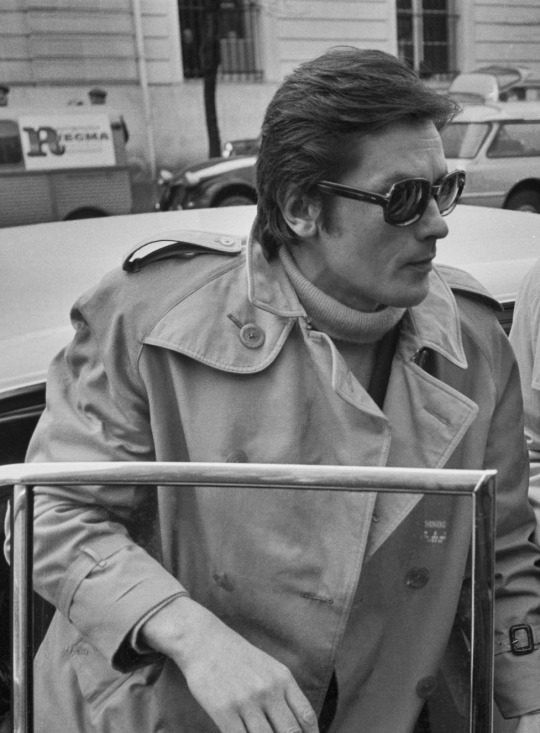
alain delon, Palais de Justice de Versailles
16 notes
·
View notes